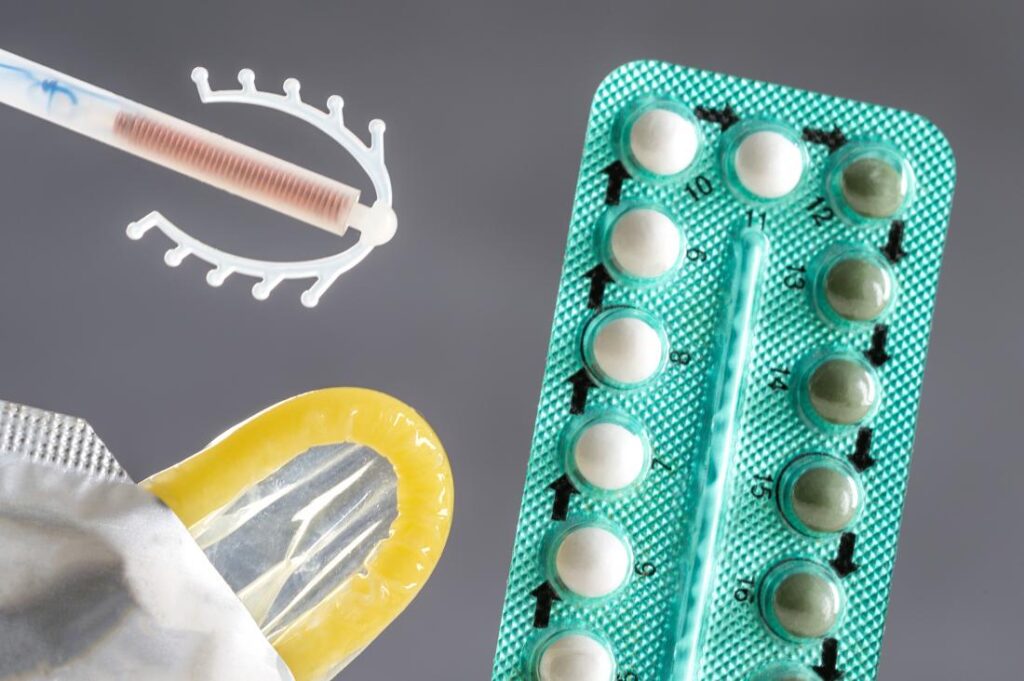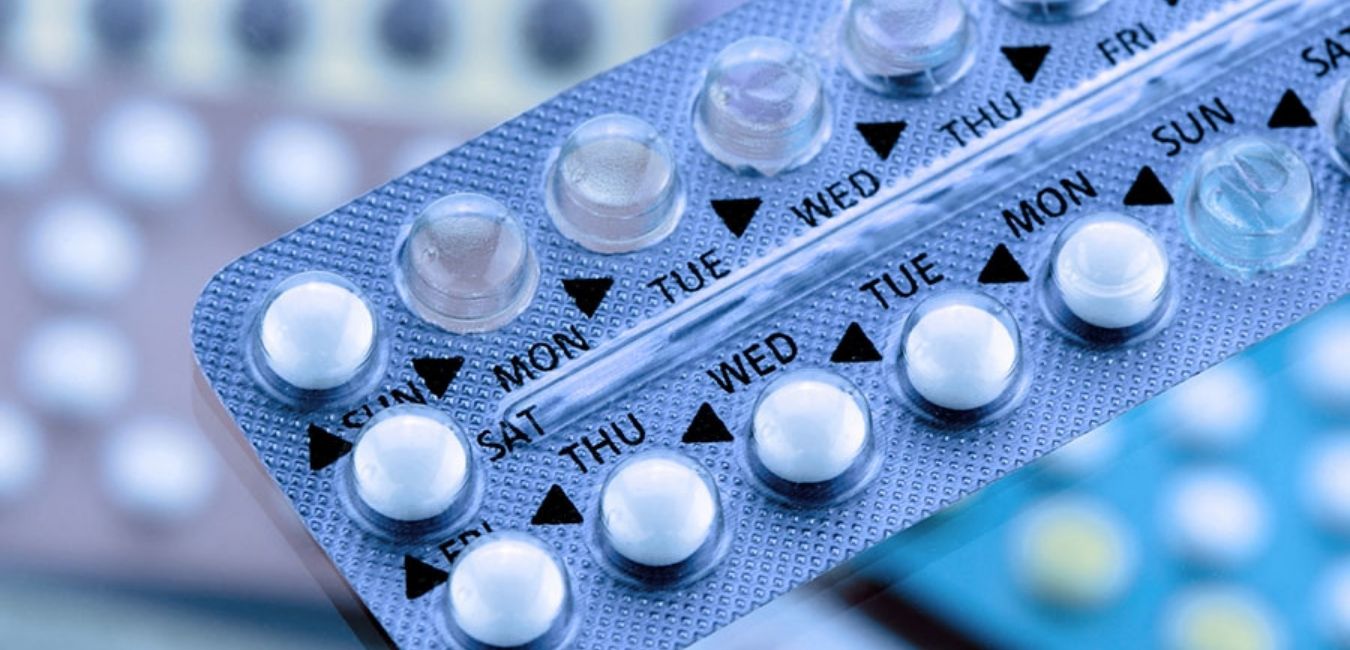Here’s a list of 10 of the many Birth Control Pills (Oral Contraceptives) and their Side Effects that you can take when having sexual intercourse to prevent pregnancy.
Birth control pills are oral contraceptives that help prevent pregnancy. Each pill contains small amounts of the hormones estrogen and/or progesterone (in its synthetic form, called progestin). When taken correctly, they have a 91 percent success rate.
According to Healthline, there are two types of birth control pills, combination and progestin-only. Combination pills are more common, but progestin-only pills, which don’t contain any estrogen, maybe a better fit for certain groups of people, such as those who have a history of blood clots or have heavy periods.
With the increasing daily sexual activities between two lovers, the demand for contraceptive options, access to birth control pills is becoming easier than ever.
Before taking birth control pills, talk with your doctor or a licensed medical professional to determine which type is right for you
You can go the traditional route and schedule an in-person visit with a doctor. Once you go through your medical history and discuss your family planning goals, your doctor will provide a prescription that you can then fill at your local pharmacy.
There are also several ways to get birth control pills online without an in-person visit to a doctor.
Telehealth services, like Nurx, Lemonaid, SimpleHealth, and The Pill Club offer online consultations, some via video and some through messaging or a medical questionnaire, with licensed doctors and healthcare professionals who review your medical history and then provide a prescription for a recommended birth control.
Once the prescription is filled, the birth control pills are shipped directly to your home.
Before we dive deeper into apparently the main reason you’re reading this article, let’s take a look at what birth control pills and contraceptives are.
What are Contraceptives?
Contraceptives are the name given to medicines and other devices that are used to prevent unwanted pregnancy. Contraceptives may also be referred to as birth control.
Hormonal contraceptives consist of one or more synthetic female sex hormones.
- Hormonal contraceptives that contain both an estrogen and progestin are called combined oral contraceptives (COCs).
- Those that contain just progestin are called progestin-only contraceptives (POPs).
COCs prevent pregnancy by inhibiting the normal process of ovulation (the release of an egg from an ovary) and by altering the lining of the uterus (the endometrium) so that it is unable to support a fertilized egg. They also change the viscosity (stickiness) of mucus within the cervix to make it hard for sperm to travel to the uterus.
POPs mainly just change the viscosity of mucus and thin the endometrium; however, in some women, they may also prevent ovulation, although this is usually inconsistent.
Hormonal contraceptives are available as pills (oral contraceptives), injections, implants, intrauterine devices, patches, and vaginal rings.
Nonhormonal contraceptives include condoms, diaphragms, sponges, spermicides, and cervical caps.
What are contraceptives used for?
Contraceptives are mostly used to help prevent women from becoming pregnant. Some hormonal contraceptives may also be prescribed to:
- Help with acne control
- Help regulate periods
- Prevent ovulation and pregnancy in women with primary ovarian insufficiency (POI)
- Reduce pain and cramping during menstruation
- Reduce the symptoms of endometriosis, polycystic ovary syndrome (PCOS), premenstrual syndrome or premenstrual dysphoric disorder (PMDD).
Emergency contraceptives are contraceptives that are taken (or inserted if a copper IUD) within a few days after unprotected sex to help prevent the implantation of a fertilized egg and possible resulting pregnancy.
Condoms are contraceptives that offer the most protection against sexually transmitted infections, although protection is not 100%.
What are the differences between contraceptives?
There are several differences between contraceptives. The main difference is that some contain hormones whereas others do not. Hormone-containing contraceptives have more side effects than nonhormonal contraceptives.
Some combined hormonal contraceptives also contain supplements such as iron or folic acid.
Are contraceptives safe?
Hormonal contraceptives may not be suitable for some women especially those with certain types of cancer, at higher risk of clotting or strokes, liver disease, severe headaches, undiagnosed vaginal bleeding, uncontrolled high blood pressure, or heart disease. Nonhormonal methods of contraception are more suitable for these women. Women who are pregnant who still wish to protect themselves from sexually transmitted infections should use barrier methods of contraception (such as condoms).
Serious side effects associated with hormonal contraceptives include:
- Blurred vision
- Chest pain and an increased risk of blood clots, heart attack and stroke
- Leg pain or swelling
- A severe headache
- Severe stomach pain.
Smoking increases the risk of serious heart side effects with COCs, including the ring or the patch. COCs should NOT be used in women aged over 35 years who smoke because they are at higher risk of serious side effects such as heart attack, blood clots, or stroke.
Certain medications and some supplements can make hormonal contraceptives less effective. Hormonal contraceptives do not offer any protection against STIs such as HIV or hepatitis. Male or female condoms should be used in combination with hormonal contraceptives if protection against STIs is needed.
For a complete list of severe side effects, please refer to the individual drug monographs.
What are the side effects of contraceptives?
Hormonal contraceptives have been associated with several different side effects such as:
- Acne
- Appetite changes
- Breast tenderness, enlargement or discharge
- Changes to menstrual flow, bleeding or spotting between periods, painful or missed periods
- Constipation or diarrhea
- Gingivitis (inflammation of the gums)
- Hair growth in unusual places
- Mood changes
- Nausea
- Skin color changes (brown or black patches)
- Stomach cramps or bloating
- Weight gain or loss
- Vaginal burning, discharge, irritation, itching, redness, or swelling
- Vomiting.
Nonhormonal contraceptives may be associated with irritation, itching, redness, or discomfort during sex.
For a complete list of side effects, please refer to the individual drug monographs.

What are birth control pills? How do they work (mechanism of action)?
Oral contraceptives (birth control pills) are medications that prevent pregnancy. They are one method of birth control. Oral contraceptives are hormonal preparations that may contain combinations of the hormones estrogen and progestin or progestin alone.
Combinations of estrogen and progestin prevent pregnancy by inhibiting the release of the hormones luteinizing hormone (LH) and follicle-stimulating hormone (FSH) from the pituitary gland in the brain. LH and FSH play key roles in the development of the egg and preparation of the lining of the uterus for implantation of the embryo. Progestin also makes the uterine mucus that surrounds the egg more difficult for sperm to penetrate and, therefore, for fertilization to take place. In some women, progestin inhibits ovulation (release of the egg).
There are different types of combination birth control pills that contain estrogen and progestin that are referred to as monophasic, biphasic, or triphasic.
- Monophasic birth control pills deliver the same amount of estrogen and progestin every day.
- Biphasic birth control pills deliver the same amount of estrogen every day for the first 21 days of the cycle. During the second half of the cycle, the progestin/estrogen ratio is higher to allow the normal shedding of the lining of the uterus to occur.
- Triphasic birth control pills have constant or changing estrogen concentrations and varying progestin concentrations throughout the cycle. There is no evidence that bi- or triphasic oral contraceptives are safer or superior to monophasic oral contraceptives, or vice versa, in their effectiveness for the prevention of pregnancy.
What are the side effects of birth control pills?
The most common side effects of birth control pills include;
- nausea,
- headache,
- breast tenderness,
- weight gain,
- irregular vaginal bleeding, and
- mood changes.
These side effects often subside after a few months of use.
Scanty menstrual periods or breakthrough bleeding may occur but are often temporary, and neither side effect is serious.
Women with a history of migraines may notice an increase in migraine frequency. On the other hand, women whose migraines are triggered by fluctuations in their own hormone levels may notice an improvement in migraines with oral contraceptive use because of the more uniform hormone levels during oral contraceptive use.
Rarely, oral contraceptives may contribute to;
- increased blood pressure,
- blood clots,
- heart attack, and
- stroke.
Women who smoke, especially those over 35, and women with certain medical conditions, such as a history of blood clots or breast or endometrial cancer, may be advised against taking oral contraceptives, as these conditions can increase the adverse risks of oral contraceptives.
What is the dosage for birth control pills? How do you take them?
Many of the birth control pills come in easy-to-use dispensers in which the day of the week or a consecutive number (1, 2, 3, etc.) is written on the dispenser with a corresponding tablet for each day or number.
For example, some Ortho-Novum dispensers are labeled “Sunday” next to the first tablet. Thus, the first tablet is to be taken on the first Sunday after menstruation begins (the first Sunday following the first day of a woman’s period). If her period begins on Sunday, the first tablet should be taken on that day.
For birth control pills that use consecutive numbers, the first tablet (#1) is taken on the first day of the menstrual period (the first day of bleeding). Tablet #2 is taken on the second day and so on.
Still, other packages instruct women to begin on day five of the cycle. For such products, women count from day one of their menstrual cycle (day one is the first day of bleeding). On the fifth day, the first tablet is taken. Tablets then are taken daily.
Most birth control pills are packaged as 21-day or 28-day units. For 21-day packages, tablets are taken daily for 21 days. This is followed by a seven-day period during which no birth control pills are taken. Then the cycle repeats.
For the 28-day units, tablets containing medication are taken for 21 consecutive days, followed by a seven-day period during which placebo tablets (containing no medication) are taken.
Newer formulations with 24 days of hormone pills and only four days of placebo pills are now available, as are continuous or extended-cycle oral contraceptive regimens, in which only active hormone pills are taken. Extended-cycle preparations include seven-day intervals of placebo pills to be taken approximately every three months.
Women just starting to take birth control pills should use additional contraception for the first seven days of use because pregnancy may occur during this period.
If women forget to take tablets, pregnancy may result. If a single tablet is forgotten, it should be taken as soon as it is realized that it is forgotten. If more than one tablet is forgotten, the instructions that come with the packaging should be consulted, or a physician or pharmacist should be called.
Which drugs or supplements interact with birth control pills?
Estrogens can inhibit the metabolism (elimination) of cyclosporine, resulting in increased cyclosporine blood levels. Such increased blood levels can result in kidney and/or liver damage. If this combination cannot be avoided, cyclosporine concentrations can be monitored, and the dose of cyclosporine can be adjusted to assure that its blood levels do not become elevated.
Estrogens appear to increase the risk of liver disease in patients receiving dantrolene (Dantrium) through an unknown mechanism. Women over 35 years of age and those with a history of liver disease are especially at risk.
Estrogens increase the liver’s ability to manufacture clotting factors. Because of this, patients receiving warfarin (Coumadin) need to be monitored for loss of anticoagulant (blood-thinning) effect if estrogen is begun.
Several medications, including some antibiotics and antiseizure medications, can decrease the blood levels of oral contraceptive hormones, but an actual decrease in the effectiveness of the oral contraceptive has not been convincingly proven. Nonetheless, because of this theoretical possibility, some physicians recommend backup contraceptive methods during antibiotic use. Examples of medications that increase the elimination of estrogens include
- carbamazepine (Tegretol),
- phenobarbital,
- phenytoin (Dilantin),
- primidone (Mysoline),
- rifampin (Rifadin),
- rifabutin (Mycobutin), and
- ritonavir (Norvir).
Birth control pills with higher concentrations of estrogen or alternative forms of contraception may be necessary for women using those medications.
Are birth control pills safe to store in hot or cold weather?
All oral contraceptives should be stored between 15 C (59 F) and 30 C (86 F).
Are birth control pills safe to take if you are breastfeeding?
The use of birth control pills during lactation has been associated with decreased milk production, decreased infant weight gain, and decreased nitrogen and protein content of milk. The amount of estrogen consumed by an infant whose mother takes a standard dose of birth control pills is considered to be the same as from a lactating woman who is not taking birth control pills, and side effects have not been reported.
Using a progestin-only product is most often recommended during lactation if birth control pills are to be used during this period. The American College of Obstetrics and Gynecology (ACOG) recommends delaying taking combined estrogen-progestin contraceptives until at least six weeks postpartum, while the World Health Organization (WHO) recommends delaying the initiation of combined contraceptives until six months.
How effective are birth control pills?
If taken correctly, birth control pills are very effective in preventing pregnancy. Both the combination pill and the progestin-only pill have 9 percent failure rates with typical use. That means out of 100 people with a vagina using the pill, 9 would get pregnant.
To be fully effective, progestin pills must be taken within the same 3-hour time period every day. If you miss this time window, you should take your pill as soon as you remember and use a different method of contraception, like a condom, for 2 days.
There is slightly more flexibility with combination pills. In general, you should try to take combination pills at the same time each day, but you can take them within the same daily 12-hour window and still have pregnancy protection.
Certain medications may make either type of pill less effective, including:
- rifampin (an antibiotic)
- certain antiretroviral and HIV medications such as efavirenz
- certain antiseizure medications such as carbamazepine, levonorgestrel, oral norethindrone, and the subdermal etonogestrel implant
- St. John’s wort
The pill may also be less effective if you experience diarrhea or vomiting. If you’ve had a stomach illness, check with your doctor to see whether you’re at risk of pregnancy. In that case, you should use a backup method of contraception, such as a condom.
What are the pros and cons of birth control pills?
Pros
- When taken correctly, they’re highly effective. They protect against pregnancy better than most other birth control options.
- They can help regulate your menstrual cycle. This can be helpful for people with irregular or heavy periods.
- They’re reversible. When you stop taking them, your cycle will return to normal and you can get pregnant if you want to.
Cons
- They don’t protect against sexually transmitted infections (STIs). You or your partner(s) will have to use condoms to prevent STI transmission.
- You have to take a pill every day. If you miss a pill or take it outside the 3- or 12-hour window (depending on which pill you’re using), your risk of pregnancy increases.
- You have to make sure you have a new pack ready to go. Delaying starting a new pack can also increase your risk of pregnancy.
What are the types of birth control pills?
There are two types of birth control pills, combination and progestin-only. Combination pills are more common, but progestin-only pills, which don’t contain any estrogen, maybe a better fit for certain groups of people, such as those who have a history of blood clots or have heavy periods.
Combination pills
Combination pills contain synthetic forms of the hormones estrogen and progesterone (called progestin in its synthetic form). Estrogen controls the menstrual cycle.
Estrogen levels are naturally highest in the middle of your cycle and lowest when you have your period. Progesterone prepares the uterus for pregnancy after ovulation by thickening the endometrium. High progesterone levels also prevent ovulation.
Combination pills come in a 28-pack. Most pills in each cycle are active, which means they contain hormones. The remaining pills are inactive, which means they don’t contain hormones. There are several types of combination pills:
- Monophasic pills. These are used in 1-month cycles. Each active pill gives you the same dose of hormone. During the last week of the cycle, you can take (or skip) the inactive pills, and you still have your period.
- Multiphasic pills. These are used in 1-month cycles and provide different levels of hormones during the cycle. During the last week of the cycle, you can take or skip the inactive pills, and you still have your period.
- Extended-cycle pills. These are typically used in 13-week cycles. You take active pills for 12 weeks, and during the last week of the cycle, you can take or skip the inactive pills and have your period. As a result, you have your period only three to four times per year.
Examples of brand-name combination pills include:
- Azurette
- Beyaz
- Enpresse
- Estrostep Fe
- Kariva
- Levora
- Loestrin
- Natazia
- Ocella
- Low-Ogestrel
- Ortho-Novum
- Ortho Tri-Cyclen
- Seasonale
- Seasonique
- Velivet
- Yasmin
- Yaz
Possible benefits of combination pills
Combination pills may also provide some protection against:
- acne
- ectopic pregnancy
- thinning bones
- noncancerous breast growths
- endometrial and ovarian cancer
- anemia
- heavy periods
- severe menstrual cramps
Progestin-only pills
Progestin-only pills contain progestin (synthetic progesterone) without estrogen. This type of pill is also called the minipill.
Progestin-only pills can help reduce bleeding in people with heavy periods. They may be a good choice for people who can’t take estrogen for health or other reasons, like a history of stroke, heart disease, peripheral vascular disease, and/or deep vein thrombosis.
You should also avoid estrogen if you’re over 35 and smoke, as this combination can increase your risk of developing a blood clot.
With progestin-only pills, all pills in the cycle are active. There are no inactive pills, so you may or may not have a period while taking progestin-only pills.
Examples of brand-name progestin-only pills include:
- Camila
- Errin
- Heather
- Jencycla
- Nor-QD
- Ortho Micronor
Possible benefits of progestin-only pills
Progestin-only pills may be safer for people who:
- are unable to tolerate estrogen therapy
- are smokers
- are older than 35
- have a history of blood clots
- want to breastfeed
Deciding on a type of birth control pill
Not every type of pill is a good fit for every person. Talk with your doctor about which pill option would work best for you. Factors that can affect your choice include:
- Your menstrual symptoms. If you experience heavy bleeding, you may do better with a progestin-only birth control pill instead of a combination pill.
- Whether you are breastfeeding. If you’re breastfeeding, your doctor may recommend avoiding birth control pills that contain estrogen.
- Your cardiovascular health. If you have a history of stroke, blood clots, and/or deep vein thrombosis, your doctor may recommend a progestin-only birth control pill.
- Other chronic health conditions you may have. If you have chronic health conditions, such as active breast or endometrial cancer, migraine with aura, or heart disease, you may not be a good candidate for oral contraceptives. Talk with your doctor and make sure to give your full health history.
- Other medications you may take. If you’re taking antibiotics or herbal remedies, such as St. John’s Wort, combination birth controls may not be a good fit for you. Certain antiviral drugs and epilepsy medications can also interfere with birth control pills, and vice versa.
Below are short details of 10 random birth control pills. The type of pills (either combination pills or progestin-only pills) will be stated in each.
Note: The below birth control pills were shortlisted due to users’ reviews on how effective they found the medicine while considering positive/adverse effects and ease of use.
1. Estrostep Fe (birth control)
What is Estrostep Fe? Estrostep Fe is a combination birth control pill containing female hormones that prevent ovulation (the release of an egg from an ovary). This medication also causes changes in your cervical mucus and uterine lining, making it harder for sperm to reach the uterus and harder for a fertilized egg to attach to the uterus.
Estrostep Fe is used as contraception to prevent pregnancy. Estrostep Fe is also used to treat moderate acne in women who are at least 15 years old and have started having menstrual periods, and who wish to use birth control pills. There are many available brands of Ethinyl estradiol and norethindrone. Not all brands are listed on this leaflet.
Estrostep Fe may also be used for purposes not listed in this medication guide.
Generic name: Ethinyl estradiol and norethindrone (birth control) (ETH in il ess tra DYE ole and nor ETH in drone).
Brand name: Blisovi 24 FE, Estrostep Fe, Femcon FE, Kaitlib FE, Lo Minastrin Fe, Microgestin 24 FE, Norinyl 1+35, Ortho-Novum 7/7/7, Taytulla, Tri-Norinyl, Zenchent
Drug class: Contraceptives, Sex hormone combinations
For all medical prescriptions, warnings, usage, side effects, and everything about this birth control pill, click here.
2. New Day
What is New Day? Is used to prevent pregnancy after unprotected sex or failure of other forms of birth control (such as condom breakage, or missing 2 or more birth control pills). New Day may also be used for purposes not listed in this medication guide.
Not approved for use by anyone younger than 17 years old. You should not use levonorgestrel if you are allergic to it.
Ask a doctor or pharmacist before taking levonorgestrel if you regularly use medication for seizures, tuberculosis, or HIV/AIDS. Certain medications can make levonorgestrel less effective as an emergency form of contraception.
Levonorgestrel may slow breast milk production. Tell your doctor if you are breastfeeding.
Use exactly as directed on the label, or as prescribed by your doctor. New Day must be taken as soon as possible after unprotected sex (no later than 72 hours afterward). Call your doctor right away if you vomit within 2 hours after taking New Day. Do not take a second dose without first asking your doctor.
If your period is late by 1 week or longer after the expected date, you may be pregnant. Get a pregnancy test and contact your doctor if you are pregnant. New Day will not terminate a pregnancy if the fertilized egg has attached to the uterus.
Within 3 weeks after taking New Day, a doctor should confirm that you are not pregnant and that this medicine has not caused any harmful effects.
Generic name: levonorgestrel emergency contraceptive (LEE voe nor jes trel).
Brand name: AfterPill, BionaFem, EContra EZ, Fallback Solo, Morning After, My Choice, My Way, New Day, Opcicon One-Step, Plan B One-Step, React, Take Action.
Drug class: Contraceptives
For all medical prescriptions, warnings, usage, side effects, and everything about this birth control pill, click here.
3. Zovia 1/50
What is Zovia 1/50? It is a combination birth control pill containing female hormones that prevent ovulation (the release of an egg from an ovary). Zovia 1/50 also causes changes in your cervical mucus and uterine lining, making it harder for sperm to reach the uterus and harder for a fertilized egg to attach to the uterus. Zovia 1/50 is used to prevent pregnancy. Zovia 1/50 may also be used for purposes not listed in this medication guide.
Warnings: Do not use birth control pills if you are pregnant or if you have recently had a baby.
You should not use birth control pills if you have: uncontrolled high blood pressure, heart disease, coronary artery disease, circulation problems (especially with diabetes), undiagnosed vaginal bleeding, liver disease or liver cancer, severe migraine headaches, if you also take certain hepatitis C medication, if you will have major surgery, if you smoke and are over 35, or if you have ever had a heart attack, a stroke, a blood clot, jaundice caused by pregnancy or birth control pills, or cancer of the breast, uterus/cervix, or vagina.
Taking birth control pills can increase your risk of blood clots, stroke, or heart attack.
Generic name: ethinyl estradiol and ethynodiol diacetate (ETH in ill ESS tra DYE ol and ETH in o DYE ol dye AS e state).
Brand name: Kelnor, Zovia 1/35, Zovia 1/50.
Drug class: Contraceptives
For all medical prescriptions, warnings, usage, side effects, and everything about this birth control pill, click here.
4. Triphasil
What is Triphasil? Triphasil (Ethinyl estradiol and levonorgestrel) is a combination birth control pill containing female hormones that prevent ovulation (the release of an egg from an ovary).
Triphasil also causes changes in your cervical mucus and uterine lining, making it harder for sperm to reach the uterus and harder for a fertilized egg to attach to the uterus.
Triphasil is used as contraception to prevent pregnancy. There are many available brands of Ethinyl estradiol and levonorgestrel.
Take Triphasil exactly as prescribed by your doctor. Follow all directions on your prescription label. Do not take this medicine in larger or smaller amounts or for longer than recommended.
Take your first pill on the first day of your period or on the first Sunday after your period begins. You may need to use backup birth control, such as condoms or a spermicide, when you first start using Triphasil. Follow your doctor’s instructions.
Take one pill every day, no more than 24 hours apart. When the pills run out, start a new pack the following day. You may get pregnant if you do not take one pill daily. Get your prescription refilled before you run out of pills completely.
Some birth control packs contain seven “reminder” pills to keep you on your regular cycle. Your period will usually begin while you are using these reminder pills.
Use backup birth control if you are sick with severe vomiting or diarrhea.
You may have breakthrough bleeding, especially during the first 3 months. Tell your doctor if this bleeding continues or is very heavy.
If you need major surgery with long-term bed rest, you may need to stop using this medicine for a short time. Any doctor or surgeon who treats you should know that you are using Triphasil.
While taking Triphasil, you will need to visit your doctor regularly.
Store Triphasil at room temperature away from moisture and heat.
Generic name: Ethinyl estradiol and levonorgestrel (ETH in ill ess tra DYE ol and LEE vo nor JESS trel).
Brand name: Triphasil.
Drug class: Contraceptives
For all medical prescriptions, warnings, usage, side effects, and everything about this birth control pill, click here.
5. Plan B
What is Plan B? Plan B is an emergency contraceptive that is used to prevent pregnancy after unprotected sex or after the failure of another birth control method. It works by preventing a woman’s egg from fully developing. It may also prevent the attachment of the woman’s egg to the wall of the uterus (womb).
No contraceptive method is 100 percent effective. Birth control methods such as having surgery to become sterile or not having sex are more effective. This medicine should not be used as a regular method of birth control. Discuss your options for birth control with your doctor.
Plan B One-Step® is available as an over-the-counter medicine for any woman of childbearing potential.
Generic name: levonorgestrel (lee-voe-nor-JES-trel) (Oral route).
Drug class: Contraceptives, Progestins
For all medical prescriptions, warnings, usage, side effects, and everything about this birth control pill, click here.
6. EContra One-Step
EContra One-Step is used to lower the chance of pregnancy after unprotected sex.
Generic name: Levonorgestrel (Systemic) (LEE voe nor jes trel)
Brand name: Aftera, EContra EZ, EContra One-Step, Fallback Solo, My Choice, …
Drug class: Contraceptives
For all medical prescriptions, warnings, usage, side effects, and everything about this birth control pill, click here.
7. Plan B One-Step
What is Plan B One-Step? Plan B One-Step is used to prevent pregnancy after unprotected sex or failure of other forms of birth control (such as condom breakage, or missing 2 or more birth control pills).
Plan B One-Step may also be used for purposes not listed in this medication guide.
How should I take Plan B One-Step? Use exactly as directed on the label, or as prescribed by your doctor.
Plan B One-Step must be taken as soon as possible after unprotected sex (no later than 72 hours afterward).
Call your doctor right away if you vomit within 2 hours after taking Plan B One-Step. Do not take a second dose without first asking your doctor.
If your period is late by 1 week or longer after the expected date, you may be pregnant. Get a pregnancy test and contact your doctor if you are pregnant. Plan B One-Step will not terminate a pregnancy if the fertilized egg has attached to the uterus.
Within 3 weeks after taking Plan B One-Step, a doctor should confirm that you are not pregnant and that this medicine has not caused any harmful effects.
Generic name: levonorgestrel (lee-voe-nor-JES-trel) (Oral route).
Drug class: Contraceptives, Progestins
For all medical prescriptions, warnings, usage, side effects, and everything about this birth control pill, click here.
8. Tri-Legest Fe
Tri-Legest Fe is used to prevent pregnancy. It is used to treat pimples (acne). It may be given to you for other reasons. Talk with the doctor.
Generic name: Ethinyl Estradiol, Norethindrone, and Ferrous Fumarate (ETH in il es tra DYE ole, nor eth IN drone, & FER uhs FYOO mar rate).
Brand name: Blisovi 24 Fe, Blisovi Fe 1.5/30, Blisovi Fe 1/20, Estrostep Fe, Gildess 24 Fe, …
Drug class: Contraceptives, Sex hormone combinations.
For all medical prescriptions, warnings, usage, side effects, and everything about this birth control pill, click here.
9. Loestrin Fe 1.5/30
Uses of Loestrin Fe 1.5/30: It is used to prevent pregnancy. It is used to treat pimples (acne). It may be given to you for other reasons. Talk with the doctor.
Generic name: Ethinyl Estradiol, Norethindrone, and Ferrous Fumarate (ETH in il es tra DYE ole, nor eth IN drone, & FER uhs FYOO mar rate).
Brand name: Blisovi 24 Fe, Blisovi Fe 1.5/30, Blisovi Fe 1/20, Estrostep Fe, Gildess 24 Fe, …
Drug class: Contraceptives, Sex hormone combinations
For all medical prescriptions, warnings, usage, side effects, and everything about this birth control pill, click here.
10. Aranelle
Aranelle® 28-Day Regimen (norethindrone and ethinyl estradiol tablets USP) provides a continuous oral contraceptive regimen of 7 light yellow tablets, 9 white tablets, 5 more light yellow tablets, and then 7 peach tablets. Each light yellow tablet contains norethindrone, USP 0.5 mg and ethinyl estradiol, USP 0.035 mg, each white tablet contains norethindrone, USP 1 mg, and Ethinyl estradiol, USP 0.035 mg, and each peach tablet contains inert ingredients.
Norethindrone, USP is a potent progestational agent with the chemical name 17-Hydroxy-19-nor-17α-pregn-4-en-20-yn-3-one. Ethinyl estradiol, USP is an estrogen with the chemical name 19-Nor-17α-pregna-1,3,5(10)-trien-20-yne-3,17-diol.
The light yellow tablet contains the following inactive ingredients, D&C yellow no. 10 aluminum lake, lactose monohydrate, magnesium stearate, and pregelatinized starch.
The white tablet contains the following inactive ingredients, lactose monohydrate, magnesium stearate, and pregelatinized starch.
The inactive peach tablets contain the following inactive ingredients, anhydrous lactose, FD&C yellow no. 6 aluminum lake, magnesium stearate, microcrystalline cellulose, and pregelatinized starch.
Generic name: norethindrone and Ethinyl estradiol.
Dosage form: tablets.
Drug class: Contraceptives, Sex hormone combinations
For all medical prescriptions, warnings, usage, side effects, and everything about this birth control pill, click here.
Further information
Remember, keep this and all other medicines out of the reach of children, never share your medicines with others and use this medication only for the indication prescribed.
Always consult your healthcare provider to ensure the information displayed on this page applies to your personal circumstances.
For a list of more birth control (oral contraceptives), its types, and side effects in detail, visit drugs.com







